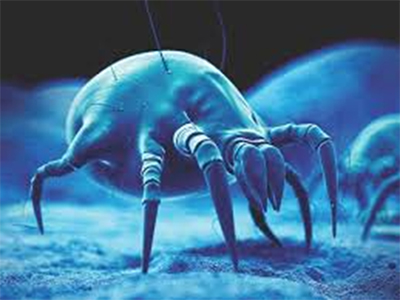
House dust mite is the major indoor allergen for allergic conditions such as asthma and allergic rhinitis. Although house dust mite sublingual immunotherapy tablets are approved for adults worldwide and for adolescents in some countries, studies in younger children are limited. A study was conducted in Japan to evaluate the efficacy and safety of mite sublingual immunotherapy tablets in children aged 1 to 4 years over one year.
The study involved 22 children in the treatment group and 12 in the control group. At baseline, both groups had a median baseline allergic rhinitis symptom score of 4. Children in the treatment group start sublingual immunotherapy tablet with a dose of 3,300 Japanese allergy units (JAU) administered in the hospital. The caregivers administered daily doses of 3,300 JAU at home for 1 week. The doses were then increased to 10,000 JAU, which was equivalent to 6 standardized quality house dust mite units in the United States, under medical supervision at the hospital. The sublingual immunotherapy tablet was then administered at home daily for 12 months.
The results showed that the median allergic rhinitis symptom score decreased from 4 at baseline to 3 at 12 months in the treatment group. But in the control group, the median allergic rhinitis symptom score increased from 4 to 6. The treatment group also experienced a significant decrease in median medication score, falling from 3 at baseline to 0 at 12 months. But the median medication of the control group did not change.
There was a significant increase in the median D. farinae-specific IgE level to 134 at 6 months in the treatment group, but levels then decreased to 77 at 12 months. In the control group, levels increased to 163 at 12 months. The treatment group also had a significant increase in median D. farinae-specific IgG4 level at 6 months and at 12 months, but the control group only had a significant increase at 6 months.
The researchers noted that changes in Dermatophagoides pteronyssinus-specific IgE and IgG4 levels over the treatment period were also similar.
There were 72 adverse events reported for 6,401 doses of sublingual immunotherapy among eight members of the treatment group. The adverse events were classified as mild and included itching and discomfort in the mouth and the tongue, itchy skin and sneezing. No cases of anaphylaxis were reported.
These findings led the researchers to conclude that house dust mite sublingual immunotherapy tablets ware well tolerated, improve symptoms of allergic rhinitis, prevent the worsening of symptoms, and alter the immune systems in children aged 1 to 4 years.
Despite this study, further studies with a larger number of participants are needed.
